| |
| |
|
|
Radiation from Fault Heterogeneities
![Barrier experiments of Dunham et al. [2003]](barrier.gif) |
To investigate the ground motion produced by this complex dynamic process, we first construct a reduced barrier model with a constant rupture velocity. Using a 3D finite-difference method, we analyze the effect of barrier radius, strength, and depth, as well as the additional diffraction effects introduced by a time delay before the barrier breaks. |
| We follow the method of Andrews [1985] to solve
the barrier problem given a constant rupture velocity. Unlike in
a kinematic model, this does not constrain the slip-time function of
points of the fault. Rather, it forces slip to be zero ahead of a
rupture front moving at constant velocity. Frictional strength is
no longer a function of slip as in a slip-weakening friction law.
Instead, for each point it falls linearly with time until it reaches a
constant value below the prestress, as shown in the figure. This
method constrains the rupture velocity to be constant. |
![Friction Law from Andrews[1985]](frictionlaw.gif) |
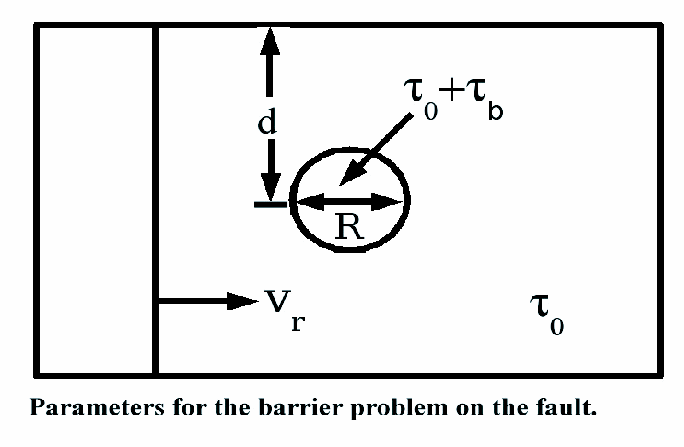 |
We parameterize the barrier problem by R,
the radius of the barrier, tau0, the stress drop of
the surrounding fault, taub, the additional stress
drop
in the barrier, and the depth d of the barrier. |
| For a small barrier, we expect the ground motion
of our reduced model to be similar to the superposition of a
homogeneous
rupture and a point source, with the added effects of diffraction off
of
the crack edge. After subtracting off the displacements for a
homogeneous
rupture, this model cleanly shows that all components of additional
displacement
are proportional to R2 and taub,
for
all points on the surface, at all times. The scaling relationship
for
depth is more complicated, but this parameter has the most influence
directly
above the hypocenter. In addition, as expected, this model shows
that
rise time for surface displacement is not a function of taub.
Rise time for surface displacement increases with R and d,
most
notably in the forward direction from the barrier. The first two columns of the figure on the right show fault-parallel displacements for the free surface for a homogeneous rupture (leftmost column) and the barrier rupture (middle column) at successive times. The bottom edge is the fault plane in these figures. The right-most column shows velocity on the fault plane for the barrier model. |
 |
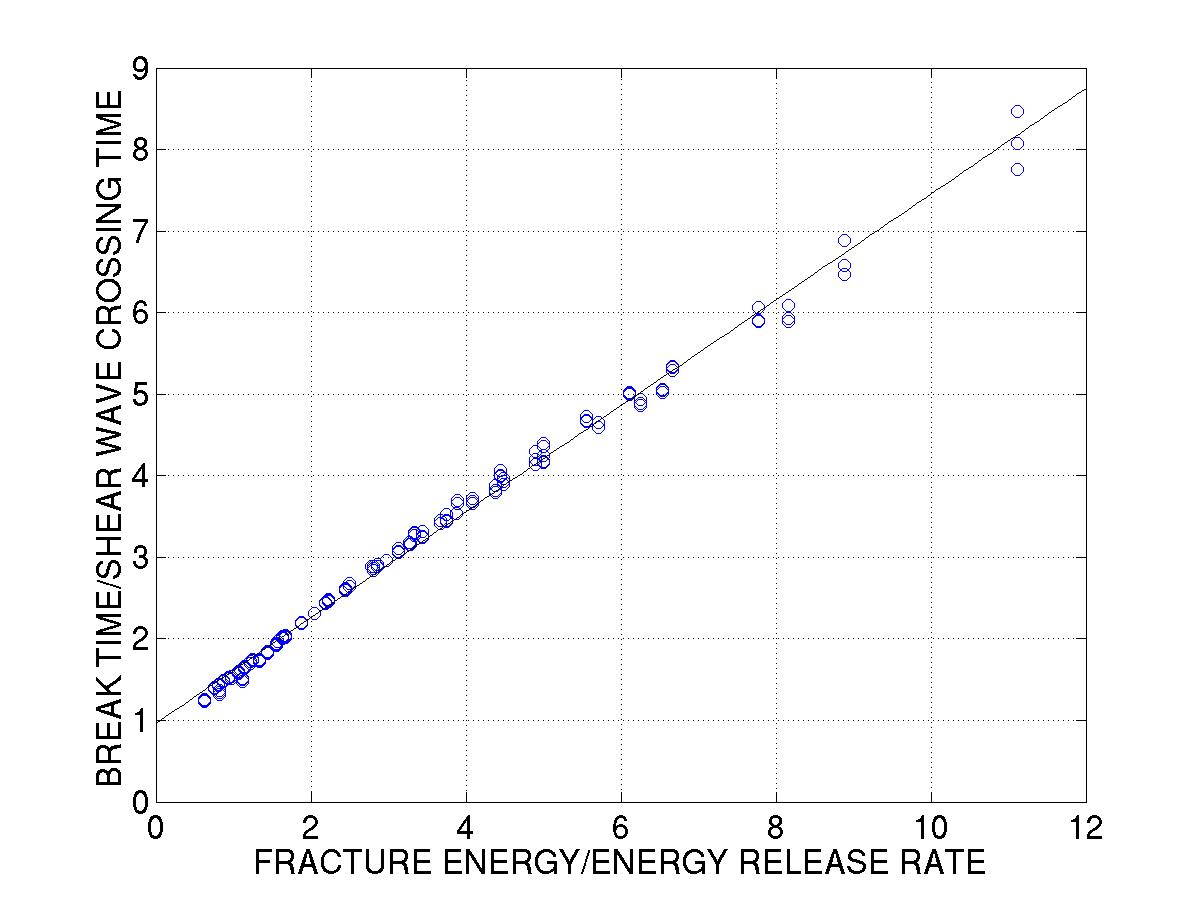 |
To make our model more realistic we next delay
the breaking of the barrier by a time tb.
Numerical work by Dunham shows that this delay time is given by tb=(2R/cs)(1+aG/G0),
where R is the radius of the barrier, cs is
the shear wave speed, G is the fracture energy, and G0
is the energy release rate. The constant a=0.6 was fit
numerically using a slip-weakening friction law, as shown in the figure
to the left. |
This delay time makes the ground motion more dramatic: as the rupture front passes through the unbroken barrier, the stress increases, particularly at the edges of the unbroken region (see figure to right). When the barrier finally breaks, it breaks more violently than in the first model without the time delay. |
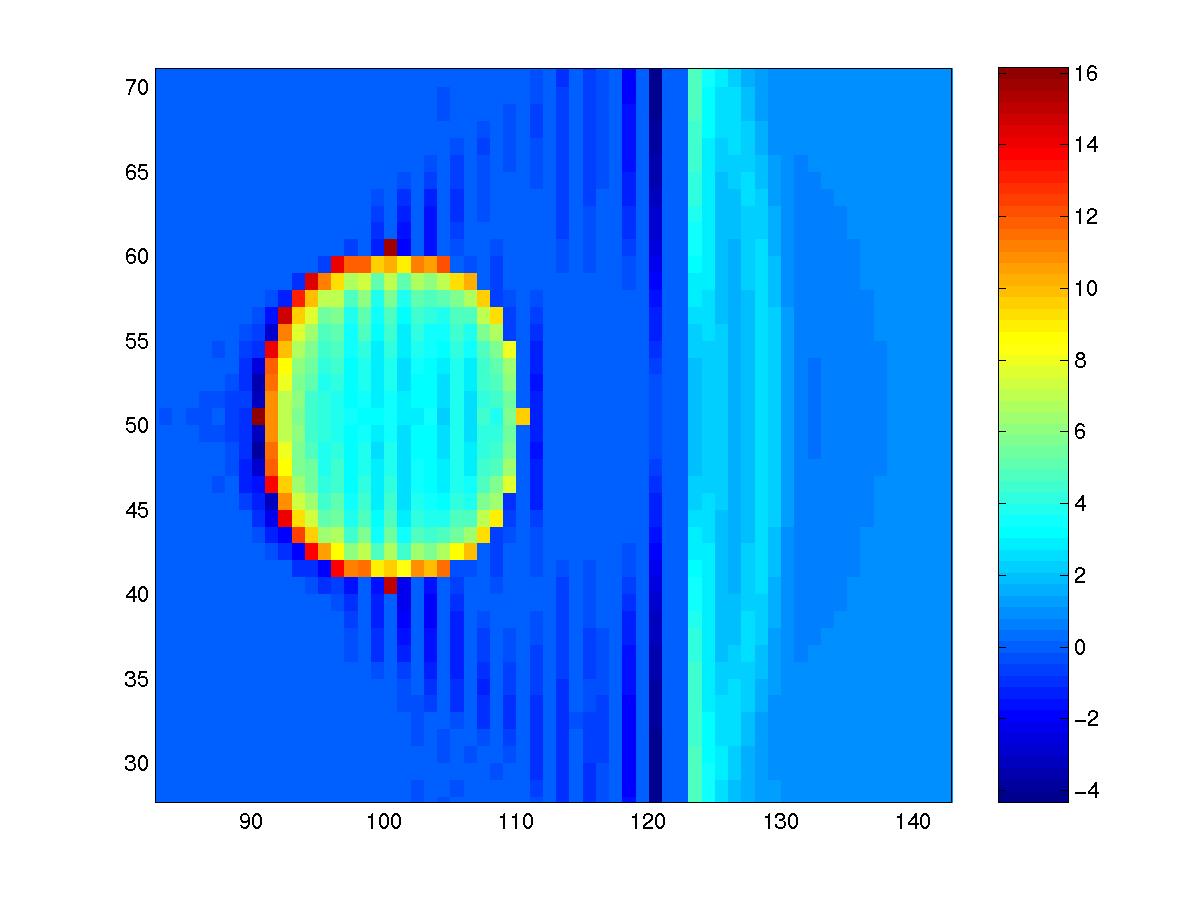 Above: The stress increase in the locked barrier as the rupture front passes. |
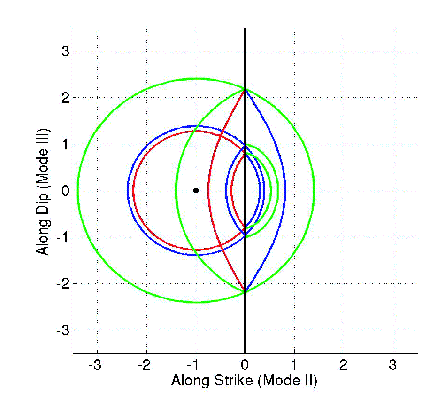
|
The barrier time delay also changes the
diffraction effects from the first model -- for the crack edge is
further ahead. The figure to the left shows the different wave
fronts we can expect. The black circle shows the origin of a point
source. The lines at the left side of the diagram show the
velocity waves caused by the source: green curves are p-waves, blue are
s-waves, and red are Rayleigh waves. To the right of the crack
edge, the fault surface is unbroken, so that
the curves shown are stress waves. |
| The middle column of the figure to the right
shows the fault-parallel velocity at various times for our second
model, with the barrier delay time. The last column shows
velocity on the fault for the second model. Unlike in our
original model, the barrier, initially locked as the rupture front
passes, arrests the ground motion, before a larger pulse from the
breaking of the barrier arrives. |
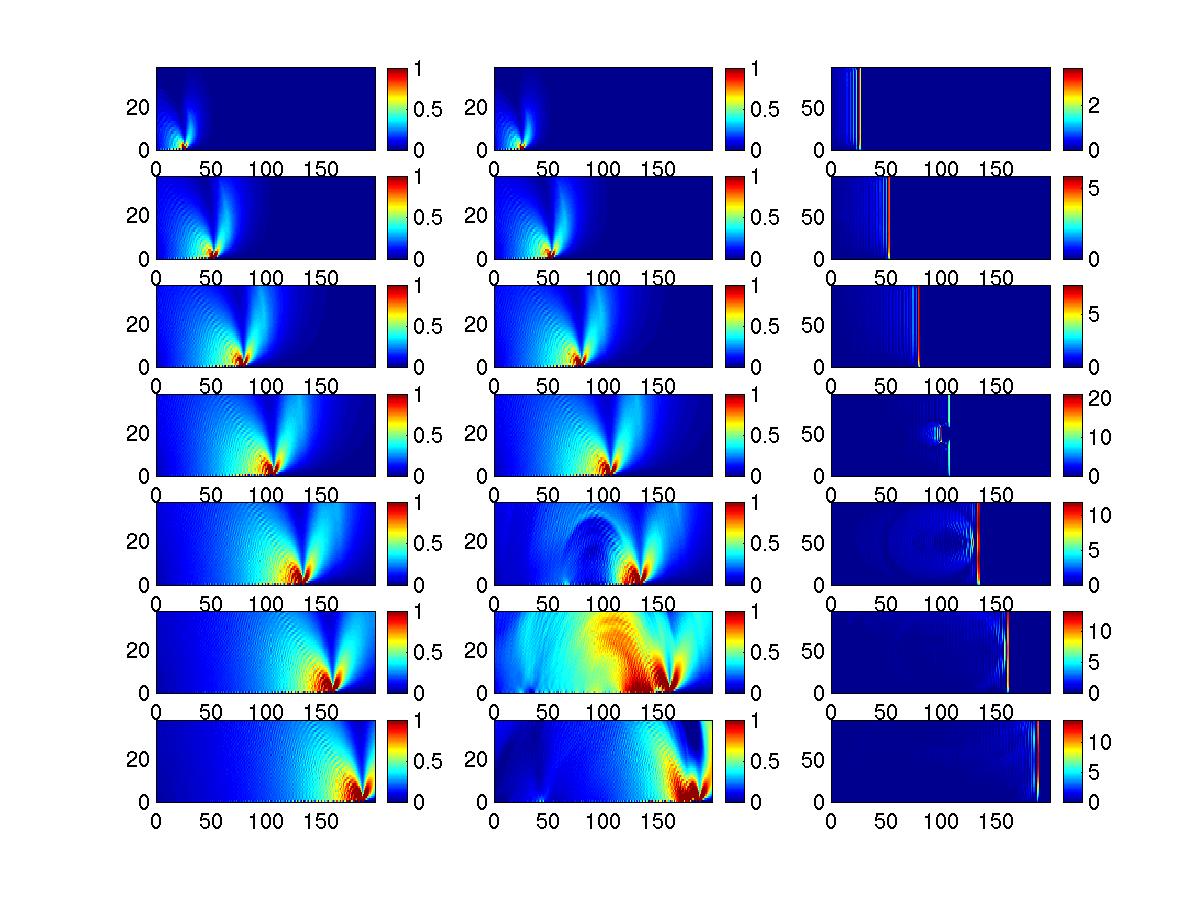 |
| These models are not fully dynamic, as we
are constraining the rupture velocity to be constant. The next
step
is to examine the fully dynamic problem, which may include supershear
transients as seen by Dunham et al. The 1984 Morgan Hill
earthquake
may be a good example of an earthquake that can largely be
characterized
in terms of these barrier models. The kinematic inversion of Beroza and Spudich [1988] shows that most of the slip in the Morgan Hill earthquake was concentrated in a small portion of the fault. The slip in this region is believed to be accountable for large, late pulses in several of the seismograms. Furthermore, their inversion shows a rupture delay in this region -- further evidence of a barrier. Finally, large fault parallel motions at the Coyote Lake Dam station may be evidence of supershear motion, as seen in the work of Dunham et al. [2003]. |
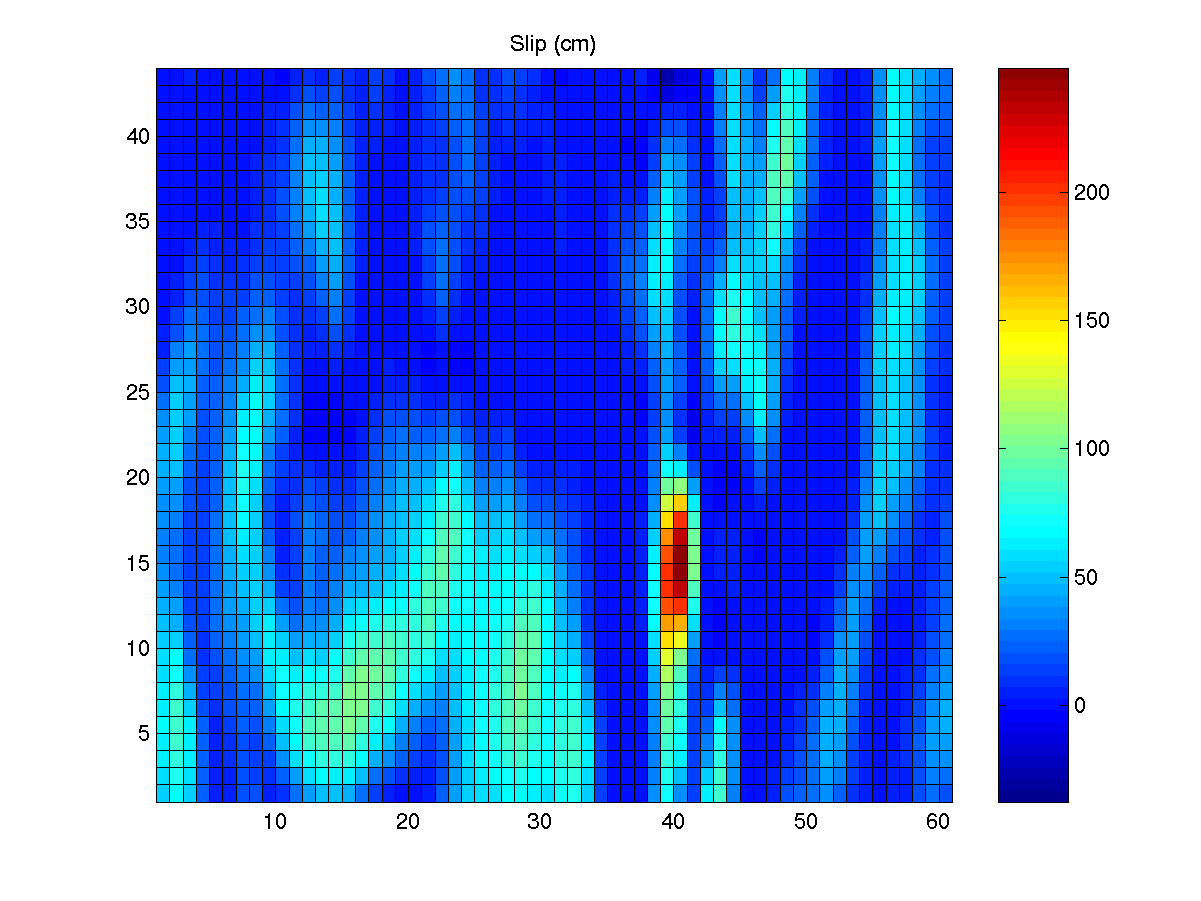 |
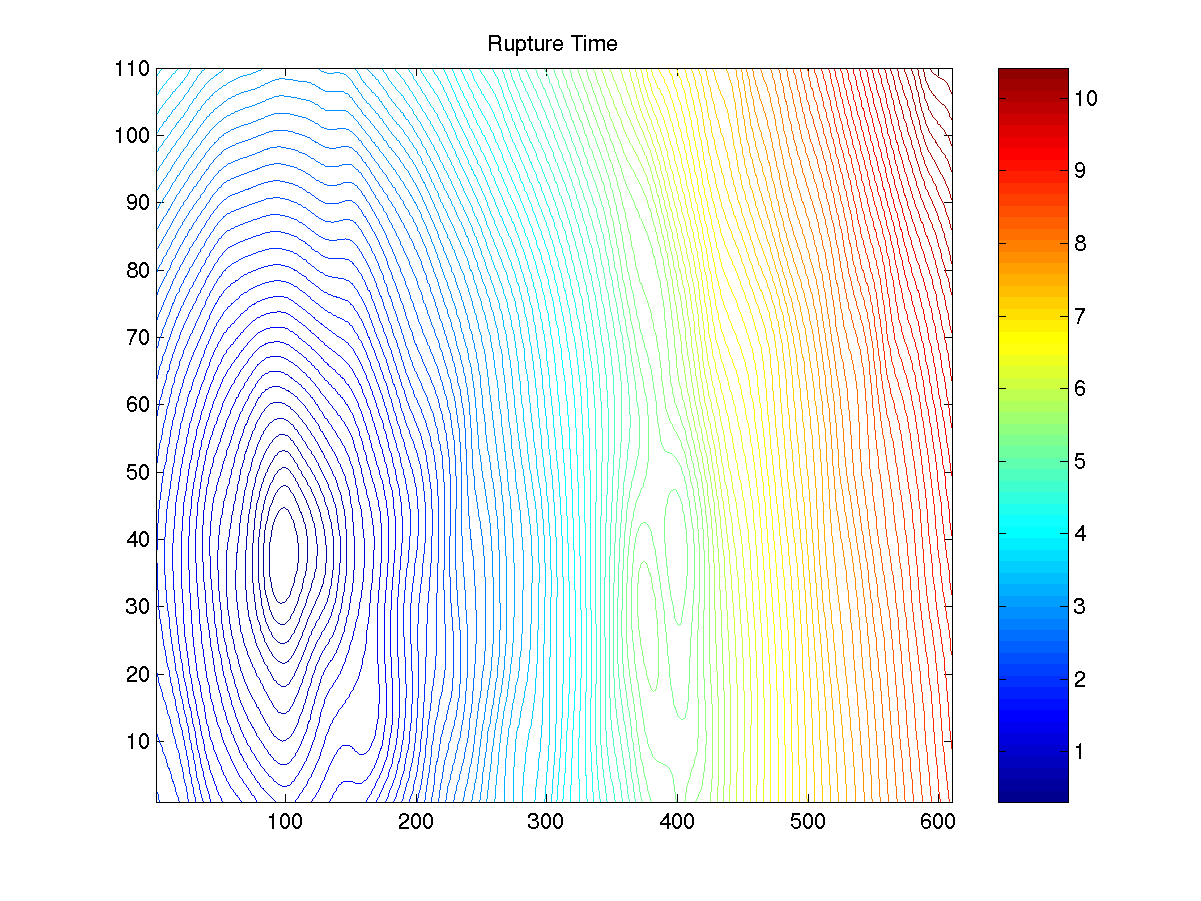
|
| Above: The slip and rupture time on the
fault for the 1984 Morgan Hill earthquake, as calculated in the
kinematic inversion of Beroza and Spudich. |
Questions? E-mail Morgan Page at:

References:
Andrews, D. J., Dynamic Plane-Strain Shear Rupture with a Slip-Weakening Friction Law Calculated by a Boundary Integral Method, BSSA, 75, 1-21, 1985.
Beroza, G. C., and P. Spudich, Linearized Inversion for Fault Rupture, J. Geophys. Res., 93, 6275-6296, 1988.
Dunham, E. M., P. Favreau, and J. M. Carlson, A Supershear Transition Mechanism for Cracks, Science, 299, 1557-1559, 2003.